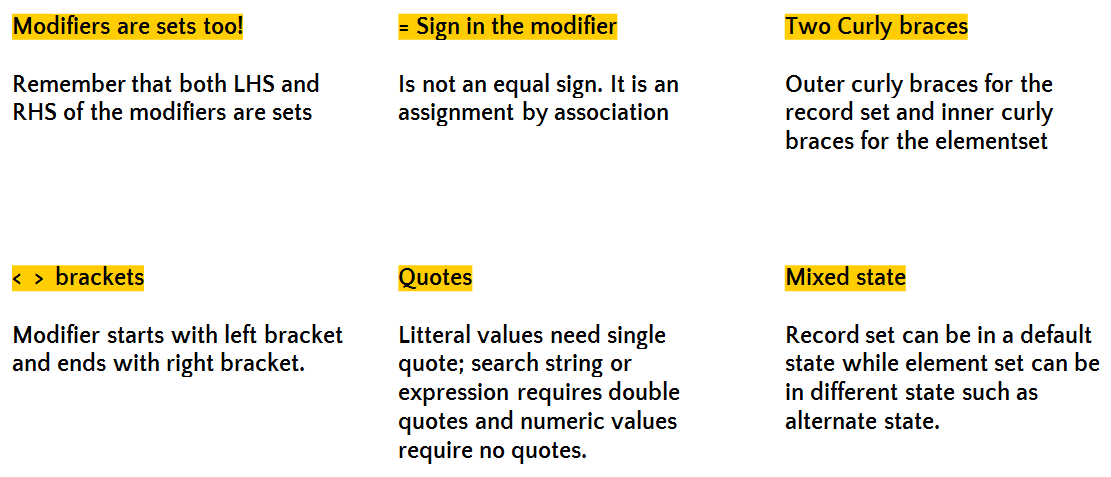Set Analysis is one of the most powerful features at your disposal as a QlikView developer. Even beginner QlikView developer should learn basics of Set Analysis as it allows you to create a set independent of user selections.
That said, set modifier is the most powerful catalyst within your set expression. Set modifier is akin to a filter but it is more than that.
One of the most intimidating aspects of Set Analysis for a beginner developer is to understand its syntax. I can relate to that. But once you understand and master its syntax well, you will start embracing power Set Analysis offers to you as a QlikView developer.
If you get confused with multiple curly braces, you are not alone! So let’s start with that.
There are always two sets of curly braces.
- The outer brackets: Sum( { … } Sales )
These define the record set; i.e. the records in the data over which the aggregation should be made. - The inner brackets: Sum( {$<Field= { … } >} Sales )
These define the element set; i.e. the set of individual field values that define the selection in this field.
(Source: Henric Constrom, QlikView Design Blog)
Set Modifier starts with < and ends with >
Set modifier has a field name on the left hand side of the equal sign(=) and either a literal string or an expression or a numeric values on the right. There is ALWAYS an equal sign between field name and values within the <> brackets.
Modifiers are sets too!
<Field= { … } >
Think of both sides of the equal sign as two sets. These sets have equal sign in between but it is not an equal sign in a literal sense.
Join Qlik Dev group in Atlanta and register to attend our next event on September 28th as you will be able to network with other Qlik developers and, together, we will dive deeper into Set modifiers.
Please go to this link to register: http://qlikdevgroup.com/atlanta-home/







